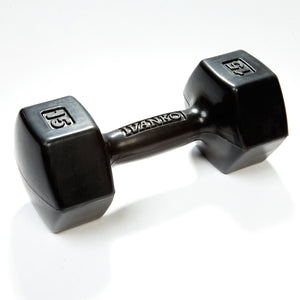Weight Exercise Dumbbell
Understanding Dumbbell Exercise Weight: A Comprehensive Guide
Dumbbell exercises are a popular choice for strength training, offering a versatile and effective way to build muscle, improve strength, and enhance overall fitness. One common question among fitness enthusiasts is, "What weight should I use for dumbbell exercises?" In this article, we will explore the factors to consider when choosing dumbbell weight, the benefits of incorporating dumbbells into your workout routine, and tips for maximizing your results.
Factors to Consider When Choosing Dumbbell Exercise Weight
Your Fitness Level
One of the most important factors in determining the right dumbbell weight is your current fitness level. If you are a beginner, it is advisable to start with lighter weights to master your form and prevent injury. This could mean using dumbbells that weigh between 5 to 10 pounds. As you become more comfortable and stronger, gradually increase the weight.
The Specific Exercise
Different exercises require different levels of strength. For instance, exercises that target larger muscle groups, like squats or deadlifts, typically allow for heavier weights compared to exercises for smaller muscles, such as bicep curls or tricep extensions. Assess each movement and adjust your weights accordingly to ensure you are challenged but can still maintain proper form.
Training Goals
Your training goals play a significant role in choosing the appropriate dumbbell weight. If your goal is to build muscle mass, opt for heavier weights with lower repetitions. Conversely, if your aim is endurance, lighter weights with higher repetitions may be more effective. Define your goals and select weights that align with them.
Benefits of Using Dumbbells in Your Workout
Versatility
Dumbbells are highly versatile and can be used to perform a wide variety of exercises targeting almost every muscle group. From chest presses to lunges, the options are endless. This versatility allows for a balanced workout that can be easily tailored to meet individual needs and preferences.
Improved Stability and Coordination
Working with dumbbells enhances stability and coordination since each side of the body has to work independently. This improves muscle imbalances and promotes functional strength, which is beneficial for everyday movements and athletic performance.
Ease of Progressive Overload
Dumbbells make it easy to implement progressive overload in your training regime. By simply increasing the weight incrementally over time, you can ensure continuous muscle growth and strength gains. This adaptability is vital for long-term fitness progress.
Tips for Maximizing Your Dumbbell Workouts
Warm Up and Cool Down
Always start with a proper warm-up to prepare your muscles for the workout and finish with a cool down to prevent injury. Simple dynamic stretches or light cardio can be beneficial at the beginning, while stretching exercises are great at the end.
Focus on Form
Proper form is crucial when performing exercises with dumbbells. Poor technique can lead to injuries and diminish the effectiveness of your workout. Invest time in learning the correct posture and movement patterns, and start with lighter weights until you master them.
Track Your Progress
Keep a log of your workouts to track the weights you use and the number of repetitions. This will help you monitor your progress and make necessary adjustments to your training plan. Celebrate your achievements, no matter how small, to stay motivated.
Conclusion
Choosing the right dumbbell exercise weight is essential for effective training and achieving your fitness goals. By considering your fitness level, the specific exercises, and your training objectives, you can select the appropriate weights for your workouts. Incorporate dumbbells into your routine, and enjoy the variety and benefits they bring to your fitness journey!























